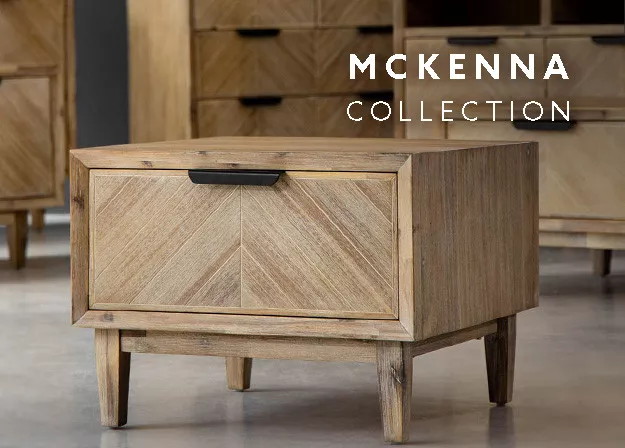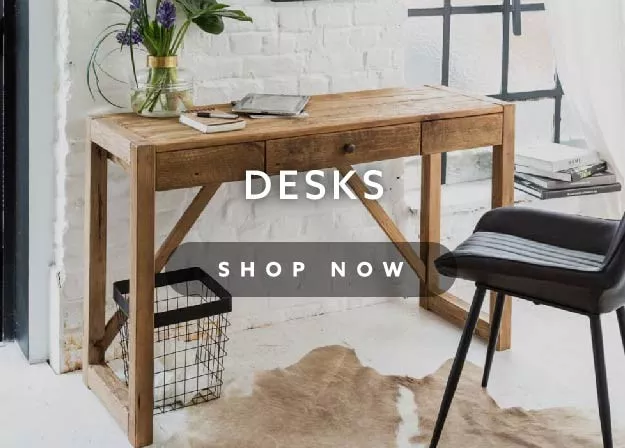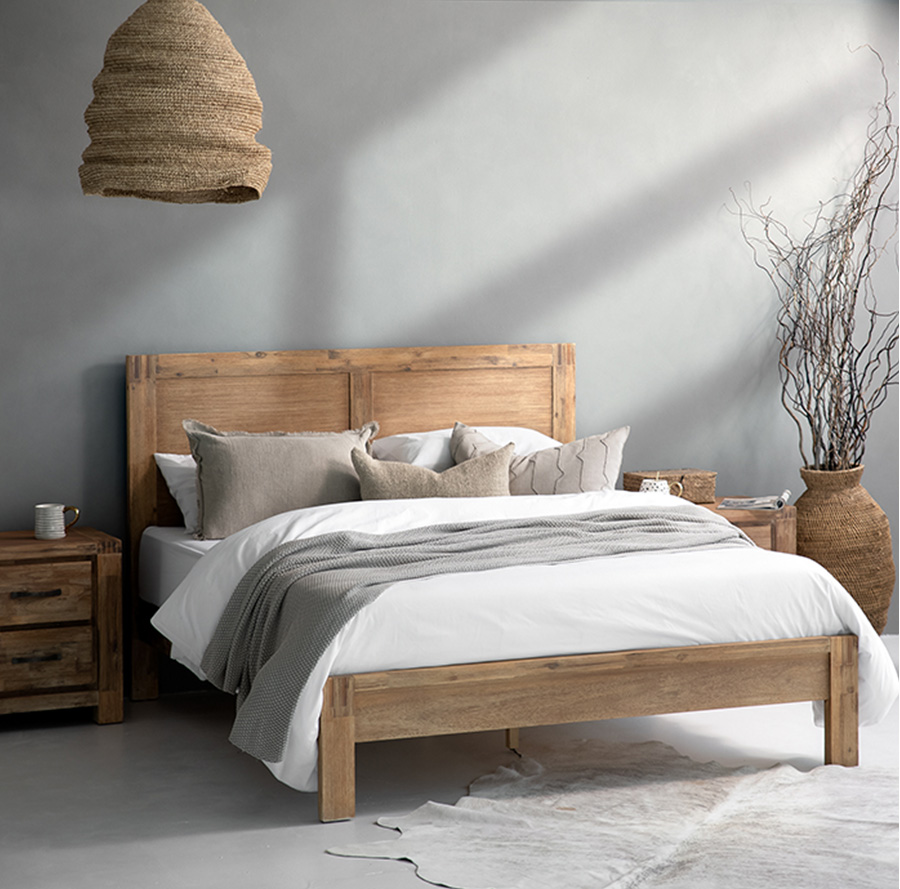How to Make the Most of Light and Colour in a Small Bedroom
If you’ve been thinking about finally transforming that woebegone study-come-storeroom into a cozy guestroom-come-baby-room, you’ve probably already come across loads of ideas for how to maximise space in a small bedroom, and what mistakes to avoid. Amid all the other fun and handy suggestions, two main points that crop up time and again are the choice of colour palette and use of lighting. And for good reason. Featured item: Bedroom furniture Colour and lighting are like the background music at an intimate party – get it all wrong (or neglect it altogether) and things are gonna get awkward pretty quickly. Get it right, and you set the perfect mood, which helps all the other little details fall into place. If you’re ready to throw the ideal small bedroom décor soiree – one that not only maximises the space but hits just the right notes to reflect your personal style – then read on! Featured item: Bedroom furniture Colour guidelines (and why you might want to break them)So much about colour is subjective. That’s why if you spend half an hour reading design articles you’re bound to come across some contradictions. There are certainly some guidelines that are just common sense (no one wants to see a red lounge suite paired with neon yellow curtains, do they?), but when it comes down to the finer nuances, no colour ‘rule’ is truly colour-fast. Below we present you with popular opinion, as well as a few thoughts on breaking the rules. The decision lies in your hands...with great design comes great responsibility! 1. Paint the room lighter colours to make it feel biggerThis one surely goes in the common sense folder. We instinctively know that a lighter room feels more open and welcoming than a darker room, for the simple fact that we are photophiles (and no, we’re not talking about the love of selfie sticks). The lighter your walls are, the more light gets reflected, creating a sense of space.
Pure white, however, will probably make you feel like you’re in a dentist’s chair, especially if you add that harsh single overhead light to the mix. So the advice is to go for shades of off-white, with blue and green hues said to be the most calming (something about being back in nature...which is, naturally, just where you’d want to be when you get up at 3am to pee). Another tip to maximise a sense of space is to paint the ceiling and wall trim a shade lighter than the walls, as this seems to make the ceiling appear higher and the walls further back. Yup, it’s all about those Jedi mind tricks!
Why break the rule: On the other hand, maybe for you it’s all about personal space, and having a place to escape and cosy up to your duvet. If there’s a deeper or darker colour that gives you the warm and fuzzies, then go ahead and use it in a smaller bedroom – it’s the best place to do so, as using those darker, bolder colours in a bigger room or living space can easily become overwhelming. And if you want the best of both – a feeling of spaciousness with a touch of your favourite cosy colour – then you can use it to create an accent wall, and choose a complementary cooler shade for the rest of the room.
Keep things streamlined with a monochrome colour schemePopular design wisdom says that a unified colour scheme gives the sense of an expanding space, as your eye is not drawn to obvious breaks in continuity. To get that ‘endless vista’ effect in your 7’ x 10’ shoebox, choose all your paint colours, furniture, curtains and major accessories from the same colour family, ensuring they closely complement one another. Also stick to plain, solid colours or small pattern prints rather than going to crazy town with carpets, rugs and fabrics. If you want to add more interest, rather play with contrasting textures. Using sheer fabrics for things like table cloths and window treatments will also help lighten things up.
Optimising your lightingThankfully, the principles for making the most of lighting in a small bedroom are a lot more straightforward than the colour spectrum appears to be. As a rule, the more light you can let in, create, and bounce around the room, the more open and spacious it’s going to feel. And when you want a more cozy, moody ambience, you can always turn down the lights (or allow Eskom to do so for you!).
1. Let the sunshine inNatural light is your best friend in any room, but particularly in a small bedroom. You can’t do much about the number and size of your windows unless you’re planning a full renovation, so the key is to optimise what you’ve got to work with. Avoid positioning furniture in a way that blocks the light from the windows, stay away from cumbersome curtains and keep all window dressings to a minimum to let that sunshine in.
2. Spread the lighting loveTo complement natural light, and especially if it’s in short supply, the key to artificial lighting is to spread it out as much as you can. Relying on one main overhead light tends to draw all attention to the centre of the room, making it feel smaller while also creating those gloomy corners. Incorporating a couple of lamps will brighten and warm up the space, also giving you another way to add some personality and draw attention to your favourite features in the room. Wall sconces are also a great option for small bedrooms to free up that precious floor and surface space.
3. On further reflection...Optimising your light doesn’t stop with light sources – it’s also about giving that light maximum freedom to play. Think of every surface as a friend or enemy of the light (cue Lord of the Rings soundtrack). Mirrors are a must-have in small rooms to add that extra dimension, courtesy of light’s playful personality. Use them on cupboard doors, dressers, and especially on walls where they can best reflect natural light. You can also opt for the reflective qualities of high-gloss paint over matte for your walls. Even your furniture has a part to play – choosing beds, chairs and dressers on raised legs rather than closed box shapes will give that light maximum freedom to bounce around the room.
Looking for more ideas to get you thinking outside the box? Have a browse through Cielo’s wide range of stylish bedroom furniture and décor that’s guaranteed to put any small bedroom in its best light. |

































 Why break the rule: While most agree that streamlined colour is the way to go in smaller spaces, some designers argue for using contrast as a way to create visual depth, making a small space more dynamic. If this feels more the right fit for you, the key is not to overdo it – stick to an accent wall as mentioned above, or limit yourself to one main contrast colour against a fairly monochrome colour scheme overall. On the low-down, one bold pattern you can get away with is a striped rug – orient the stripes parallel to the room’s length and it’ll make the room feel longer.
Why break the rule: While most agree that streamlined colour is the way to go in smaller spaces, some designers argue for using contrast as a way to create visual depth, making a small space more dynamic. If this feels more the right fit for you, the key is not to overdo it – stick to an accent wall as mentioned above, or limit yourself to one main contrast colour against a fairly monochrome colour scheme overall. On the low-down, one bold pattern you can get away with is a striped rug – orient the stripes parallel to the room’s length and it’ll make the room feel longer.



